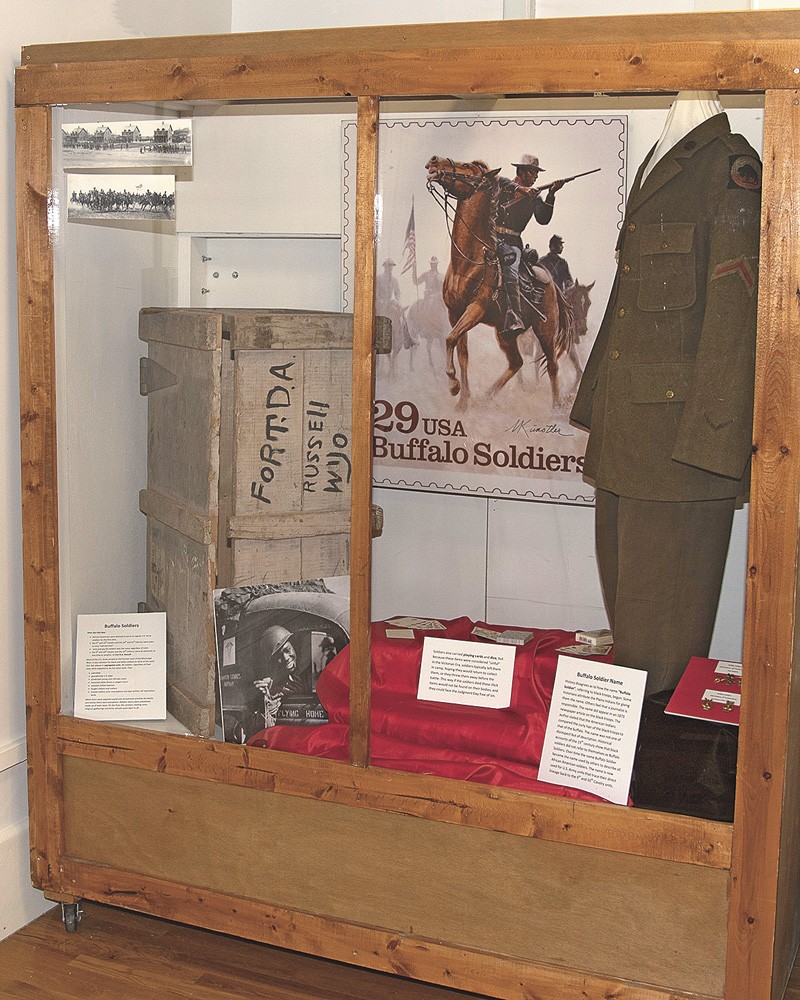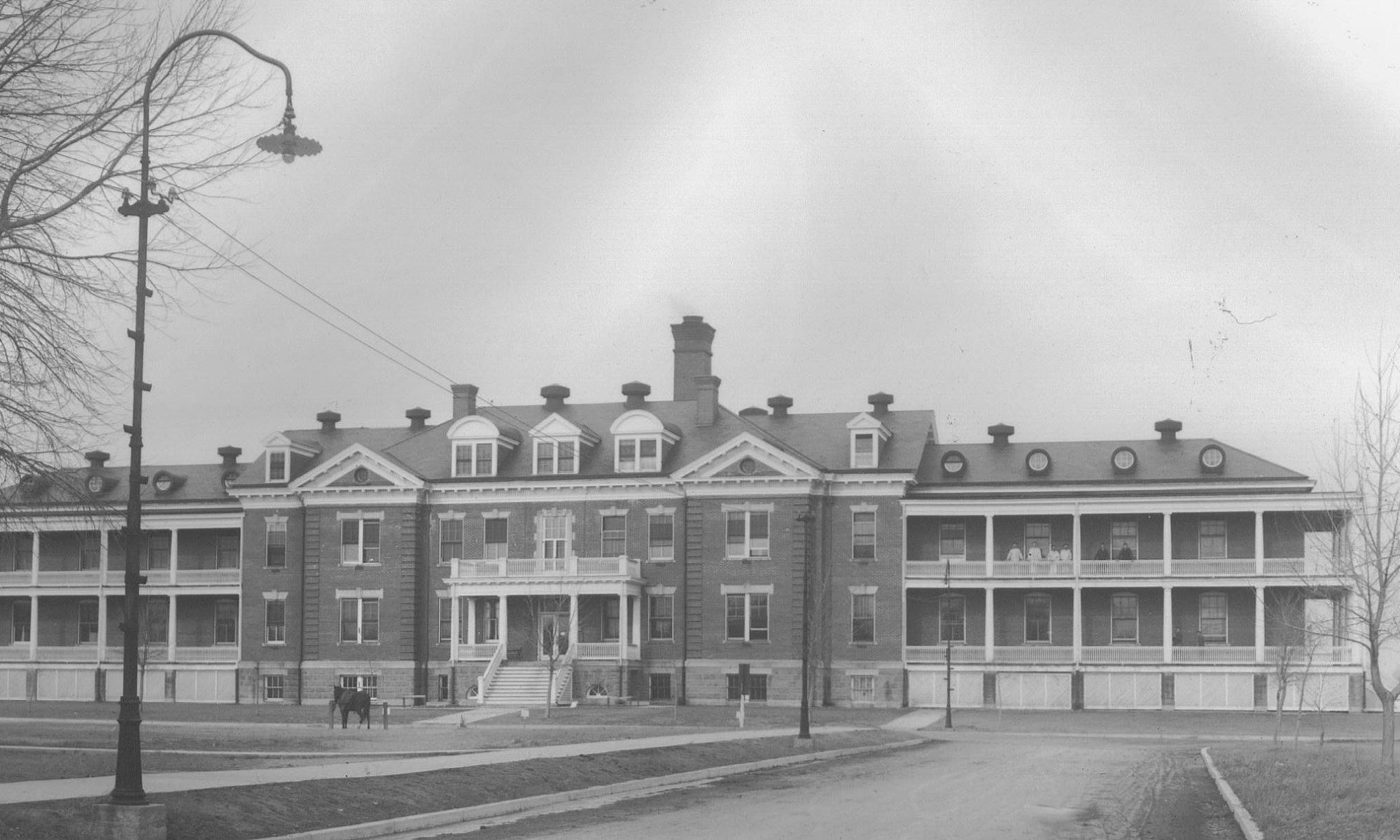August 18, 1902
After meritorious service during the Spanish-American and Philippine-American Wars, the Tenth Cavalry returned to the United States following four years of overseas combat service. The Tenth Cavalry aided in the Battles of Las Quasimas, Tayacoba, and San Juan Hill, resulting in five of its members receiving our military’s highest honor, the Medal of Honor. Reassigned to Fort D. A. Russell on August 18, 1902, Troop E of the Tenth Calvary welcomed the break from combat operations and embraced the city and its citizens. Shortly after arriving to Fort Russell, members of the Tenth Cavalry participated in the city’s annual Cheyenne Frontier Days celebration that year. They reenacted rescuing a stagecoach from Indian attackers portrayed by Arapaho and Shoshoni from the Wind River Reservation. While the unit continued to conduct daily military operations at Fort Russell, they undoubtedly enjoyed being stateside again.
The Tenth Cavalry was established by the Army Reorganization Act of 1866, which authorized the creation of six African-American regiments, the Ninth and Tenth Cavalry and the Thirty-Eighth, Thirty-Ninth, Fortieth, and Forty-First Infantry; the infantry regiments were later combined and reorganized into the Twenty-Fourth and Twenty-Fifth Infantry. Commanded by Colonel Benjamin H. Grierson, the Tenth Cavalry first organized at Fort Leavenworth, Kansas on September 21, 1866. After extensive training in cavalry tactics and operations, the U. S. Army reassigned the Tenth Cavalry’s headquarters to Fort Riley, Kansas on August 7, 1867. The unit’s mission was to protect the Pacific Railroad from Indian interference. In support of their new mission, the regiment’s Troops were continuously transferred to various posts throughout Indian Territory, where they fought against native Arapaho, Cheyenne, Comanche, and Cree. Their native combatants ultimately created the unit’s renowned moniker, “Buffalo Soldiers.”

Buffalo Soldiers Exhibit at the Warren ICBM & Heritage Museum
While historians do not entirely understand why the units received the name Buffalo Soldiers, there are multiple theories behind the appellation. One theory proposed by historians William and Shirley Leckie is grounded in a letter written by Frances Roe, the wife of a Lieutenant in the Third Infantry. Mrs. Roe believed the Native Americans called the cavalry regiments Buffalo Soldiers because “their wooly heads are so much like the matted cushion that is between the horns of the buffalo.” Another theory highlighted by Tom Rea, co-founder of the Wyoming State Historical Society, is that a member of the Tenth Cavalry, Private John Randall, fought so ferociously and intensely against the Cheyenne that his native adversaries compared him to the mighty buffalo of the Great Plains. Regardless, to be equated to the revered buffalo was considered a great honor by Native Americans. The men of the Ninth and Tenth Cavalry gladly accepted the title, and the Tenth Cavalry even incorporated the buffalo into their regimental crest in 1911. The complimentary term Buffalo Soldier was eventually adopted by the other African-American regiments later on.
The Tenth Cavalry remained at Fort Russell until March 1904 and, later, returned from October 5, 1906 to March 1, 1907. The unit’s primary mission continued to center upon providing protection and maintaining peace in the surrounding region. In 1916, the men of the Tenth Cavalry supported the unsuccessful Mexican Expedition against Francisco “Pancho” Villa led by Brigadier General John “Black Jack” Pershing (General Pershing previously commanded a troop of the Tenth Cavalry in 1892 during the Indian Wars and in 1898 during the Spanish-American War; his support of the Tenth Cavalry is what led to his nickname, John “Black Jack” Pershing). While the Tenth Cavalry did not see combat during World War II, they were deployed to North Africa in 1944. However, the unit was deactivated shortly after their arrival. The Tenth Cavalry was reactivated in 1958 and, has since, supported military operations around the world. The regiment continues to display the buffalo as a part of their patch today.
Beginning with Troop K of the Ninth Cavalry in 1887, three of the four Buffalo Soldiers regiments once called Fort D. A. Russell home, the Ninth and Tenth Cavalry and the Twenty-Fourth Infantry. While none of the units were stationed here simultaneously, the Buffalo Soldiers intermittently supported the mission at Fort Russell from 1887 to 1916—protecting the people of Cheyenne and its neighboring regions for three decades.
